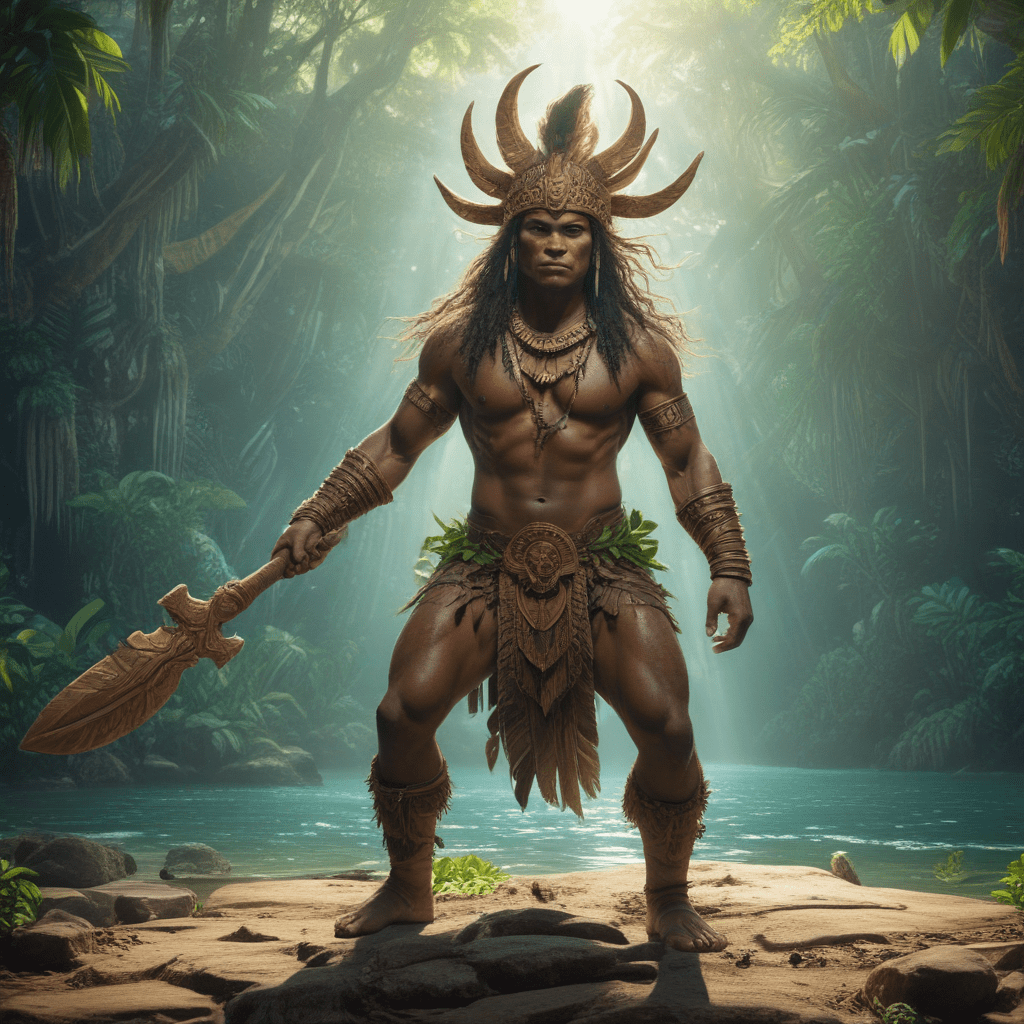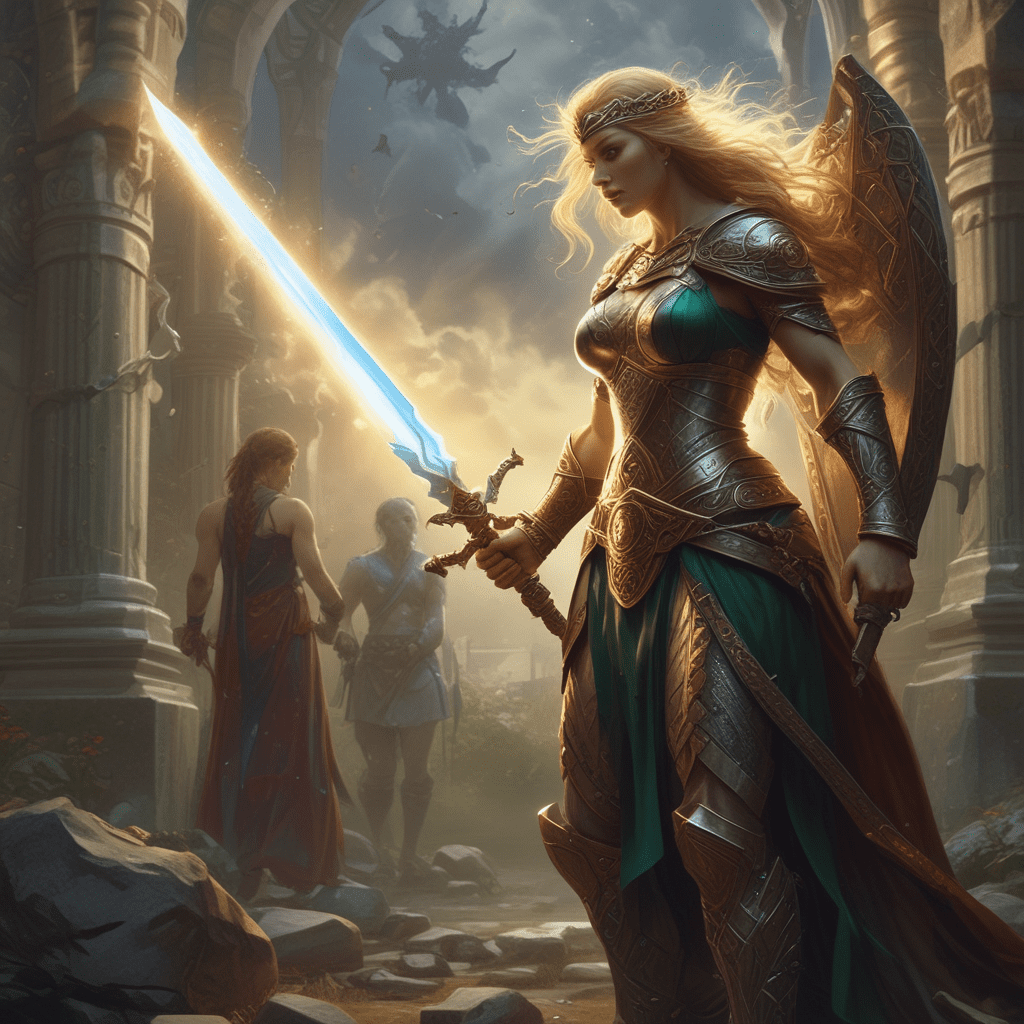Polynesian Mythology: Supernatural Beings
Polynesian mythology, an integral part of the Pacific Island cultures, is a rich tapestry woven with tales of supernatural beings, demigods, and ancestral spirits. These supernatural entities have played a significant role in shaping the cultural, spiritual, and social fabric of Polynesian societies.
I. Introduction
The vast expanse of the Pacific Ocean served as a cradle for the Polynesian people, who embarked on extraordinary voyages across the open waters. Their experiences and encounters with diverse environments and cultures gave rise to a complex and intricate mythology that continues to captivate and inspire.
II. The Origins of Supernatural Beings
Polynesian mythology holds that the supernatural realm emerged from the primordial void known as Po. From this boundless darkness arose the gods, demigods, and ancestral spirits who became the architects of the world and the protectors of the Polynesian people.
III. Major Deities
Polynesian mythology is replete with a pantheon of major deities, each with their own distinct attributes and responsibilities. Among them, Tangaroa, Rongo, and Kane stand as prominent figures:
A. Tangaroa
Tangaroa, the god of the sea, is revered as the creator of all marine life and the guardian of the vast ocean realm. He is often depicted as a powerful and majestic figure, wielding immense influence over the tides and storms.
B. Rongo
Rongo, the god of agriculture, is central to the Polynesian way of life. He is responsible for nurturing the land, ensuring bountiful harvests, and providing sustenance to the people. His presence is often invoked during planting and harvesting rituals.
C. Kane
Kane, the god of creation and life, is considered the supreme deity in many Polynesian cultures. He is believed to have brought forth the world from the primordial void and is credited with shaping the physical and spiritual realms.
IV. Demigods
Polynesian mythology is not only populated by gods but also by demigods, who were born from the union of deities and mortals. These hybrid beings possessed supernatural powers and played a significant role in Polynesian society.
A. Maui
Maui, the legendary demigod, is a central figure in Polynesian mythology. His feats of strength and cunning are celebrated in countless tales. Maui is credited with snaring the sun, catching giant fish, and lifting islands from the depths of the ocean.
B. Pele
Pele, the goddess of fire, is another renowned demigod. Her volatile nature is reflected in the volcanic eruptions that ravage the Hawaiian Islands. Pele is both feared and revered, as she represents the destructive yet regenerative forces of nature.
V. Ancestral Spirits
The Polynesian worldview emphasizes the importance of ancestral spirits. These spirits are believed to watch over their living descendants and provide guidance and protection. Ancestral shrines and rituals play a vital role in maintaining the connection between the living and the departed.
VI. Supernatural Creatures
Polynesian mythology is home to a host of supernatural creatures that roam the land, sea, and sky. These creatures can be mischievous, benevolent, or malevolent, and they often interact with humans in unexpected ways.
A. Tiki
Tiki, with their distinctive carved wooden effigies, are revered as protective spirits. They are believed to embody the power and wisdom of ancestors and are often found guarding sacred places or adorning ceremonial objects.
B. Haka
Haka, the Polynesian warriors, are known for their fierce battle dances. These ritual performances are not only displays of strength but also embody the spiritual connection between the warriors and their ancestors.
VII. The Role of Supernatural Beings in Polynesian Culture
Supernatural beings have played a pivotal role in Polynesian culture, shaping religious beliefs, practices, and social structures. They are invoked in prayers, consulted through oracles, and honored in elaborate rituals. Their presence weaves a tapestry of the sacred and the mundane, connecting the Polynesian people to the cosmos.
VIII. Supernatural Beings in Polynesian Art and Storytelling
The supernatural realm finds vibrant expression in Polynesian art and storytelling. Petroglyphs, carvings, and intricate tattoos depict scenes from mythology, capturing the essence of these powerful beings. Legends and chants, passed down through generations, recount the adventures and lessons imparted by gods, demigods, and ancestral spirits.
IX. The Influence of Christianity on Polynesian Supernatural Beings
With the arrival of Christianity in the Pacific, the traditional Polynesian belief system underwent significant transformations. Some supernatural beings were integrated into the Christian narrative, while others were relegated to the realm of folklore. Despite these changes, the influence of Polynesian mythology remains deeply embedded in the cultural fabric of the region.
X. Conclusion
Polynesian mythology, with its captivating tales of supernatural beings, continues to enthrall and inspire. These deities, demigods, ancestral spirits, and supernatural creatures provide a glimpse into the cultural, spiritual, and imaginative landscape of the Polynesian people. As the modern world embraces diversity and cultural heritage, the exploration of Polynesian mythology holds valuable lessons about the human experience and our connection to the unseen realms.
Frequently Asked Questions
Q: Who is the most powerful god in Polynesian mythology?
A: Kane is widely regarded as the supreme deity in many Polynesian cultures.
Q: What is the significance of Haka?
A: Haka, the Polynesian warrior dance, embodies the spiritual connection between warriors and their ancestors and serves as a display of strength.
Q: How did Christianity influence Polynesian supernatural beliefs?
A: Some supernatural beings were integrated into the Christian narrative, while others remained in the realm of folklore.


